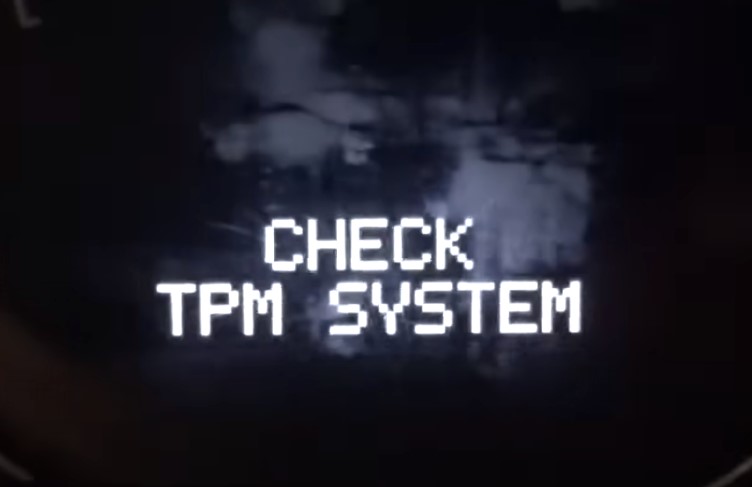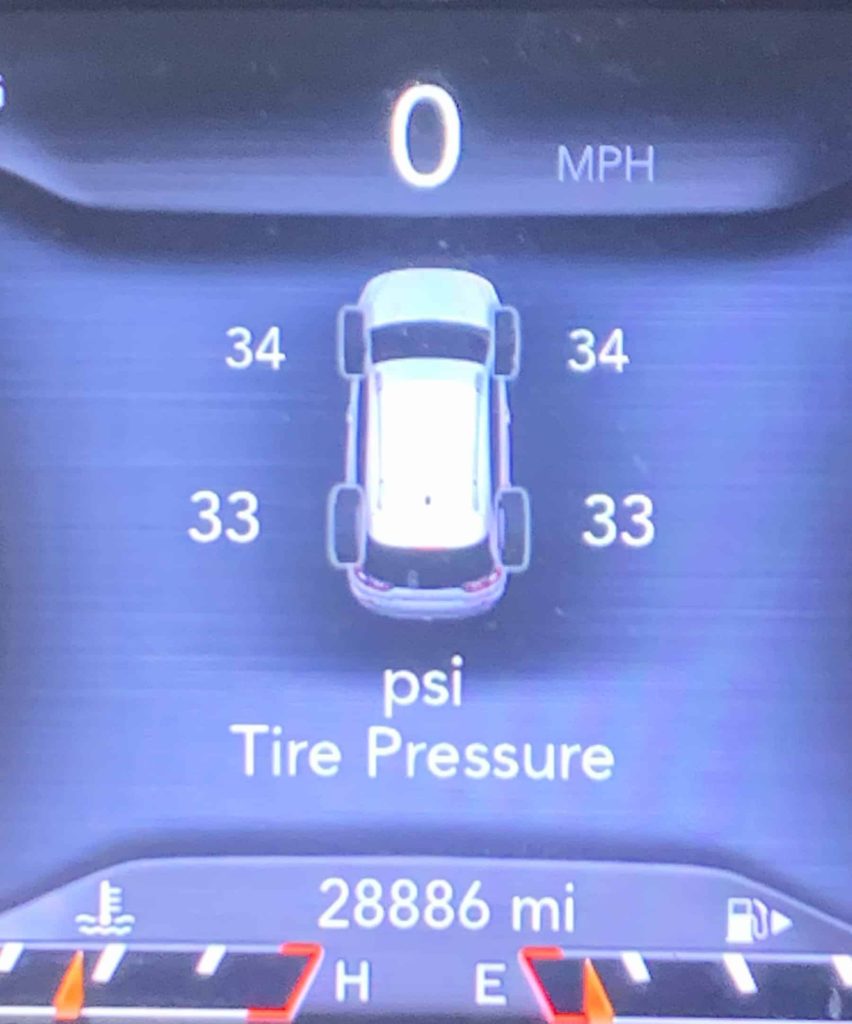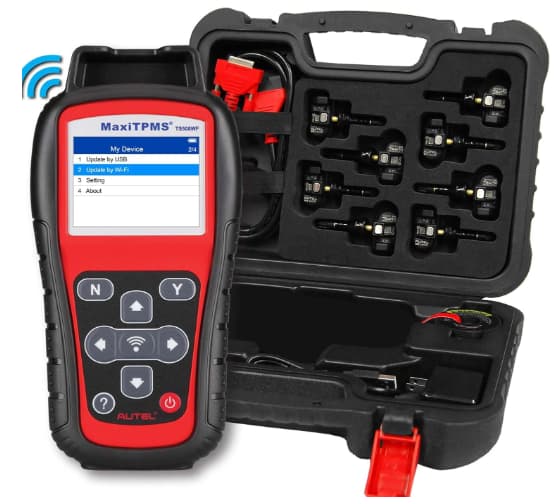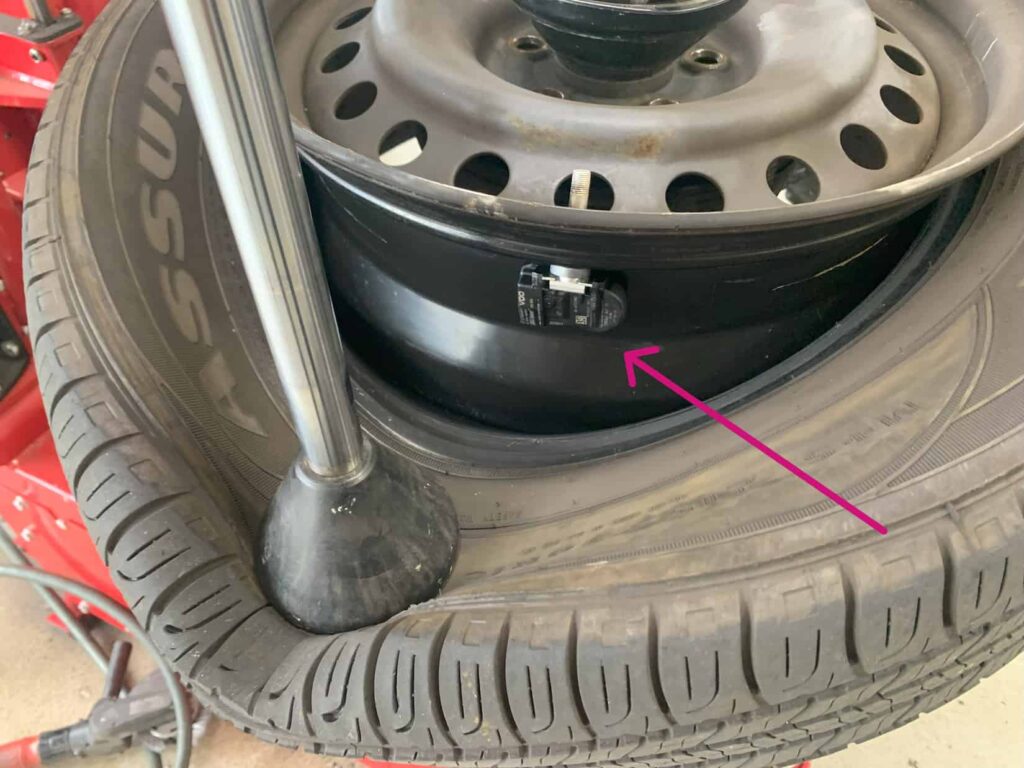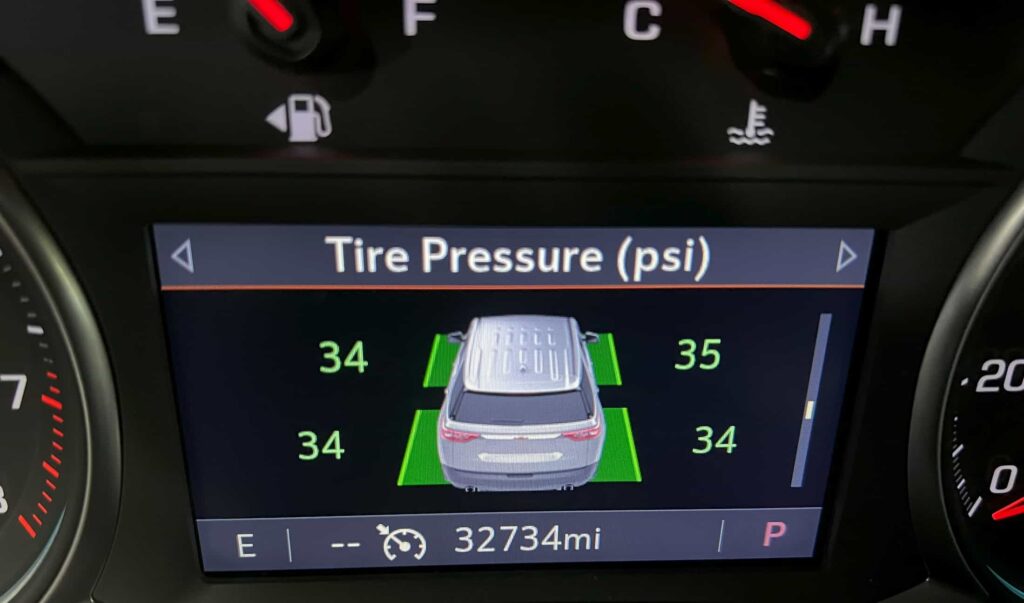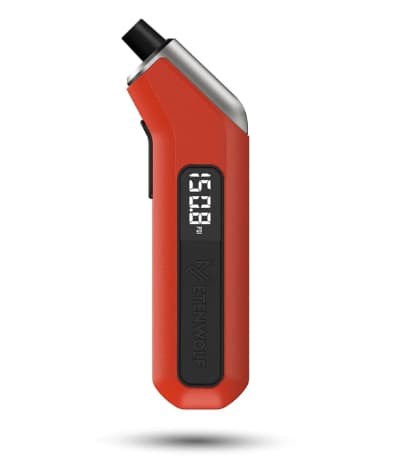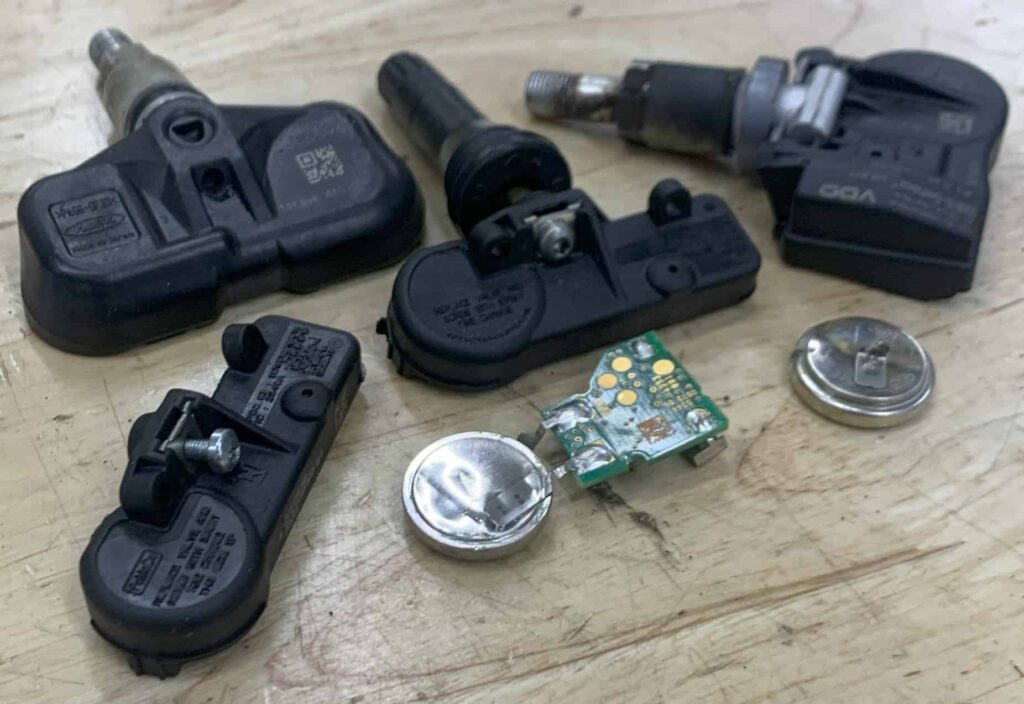What is a Jeep Tire Pressure Monitoring System?
The Jeep Tire Pressure Monitoring System (TPMS) exists to keep drivers safe on the road by alerting drivers when the air pressure in any of the tires falls below the recommended level.
Every Jeep has tire pressure sensors inside each wheel that monitor real-time tire air pressure levels and transmits this data to the vehicle’s onboard computer system. When a tire’s pressure drops significantly, the tire pressure warning light on the dashboard illuminates, serving as a warning to the driver to check and adjust the tire pressure.
How Do I Reset My Jeep TPMS Light?
To reset and turn off the Jeep TPMS light:
Open the driver side door and locate the tire pressure sticker.
Adjust all tires to their correct pressure, including the spare tire if it is equipped with a sensor. It’s important to inflate the tires to the exact pressures the door sticker recommends.
Drive at speeds exceeding 20 mph for up to 20 minutes to complete the Jeep TPMS relearn procedure.
Note: Jeep vehicles do not have a TPMS reset button.
Jeep Tire Pressure Monitoring System Troubleshooting Tips
If the TPMS light remains illuminated after resetting, consider the following troubleshooting tips:
Check Tire Pressure: Recheck the tire pressures in every tire to ensure they are at the recommended levels.
Inspect Tires: Look for signs of leaking air, such as punctures or damaged valve stems. If you suspect a tire leak, spray the tire with soapy water and check for bubbles.
Sensor Battery: TPMS sensors have batteries that can deplete; sensors may need replacement if the battery dies.
System Scan: Use a TPMS diagnostic tool to scan for error codes that could indicate a malfunctioning sensor or other issues.
Is There Anything I Can Do to Turn Off My Jeep Tire Light If Nothing Else Works?
If you are having issues resetting your Jeep’s TPMS warning light, here are a few tips:
Disconnect the battery terminal: Disconnecting your negative battery terminal will reset and delete temporary error codes in your Jeep on board computer system. This will reset your Jeep tire pressure monitoring system.
Release Air Pressure from tires: Release about 10 psi from each tire and then re-inflate each tire back to the recommended air pressures before taking your Jeep for a drive (20 minutes at speeds exceeding 20 mph).
TPMS Diagnostic Tool: Use a special TPMS tool to scan and diagnose each tire pressure sensor to determine each sensor’s health.
How Does the Jeep TPMS Work?
All Jeep vehicles use a direct TPMS. This means that the tire pressure monitoring system relies on individual tire pressure sensors inside each wheel. Each tire pressure sensor monitors tire pressure and temperature of the tire it’s in.
The TPMS sensors then wirelessly transmit this data to the Jeep on board computer. The on board computer then determines if the tire pressures are within an appropriate and safe range. If the tire air pressures are below this threshold a low tire pressure warning light is triggered on the Jeep dashboard.
What Causes the Jeep Low Tire Pressure Light to Turn On?
The low tire pressure light on your Jeep dashboard is a vital indicator designed to alert you of potential safety issues regarding tire pressure. Several factors can trigger this tire warning light:
Under-Inflation: The most common and obvious reason for the tire light to activate is when one or more of your tires are significantly under-inflated (typically 20-25% below the recommended air pressure level). This can happen due to natural air loss over time, a drop in ambient temperatures (which decreases air density), or a slow leak in the tire.
Puncture or Leak: A puncture from nails, glass, or other road debris can cause rapid air loss. Additionally, poor valve stem seals or damage to the tire bead can also lead to leaking air, prompting the light to turn on.
Weather & Temperature Changes: Tire pressure can decrease in cold weather and increase in hot conditions. For every 10 degrees Fahrenheit change in temperature, tire pressure can change about 1-2 psi. This fluctuation will trigger the tire pressure light, especially during the change of seasons.
TPMS Sensor Issues: Faulty or aging TPM sensors themselves can falsely report low tire pressure. Tire sensor batteries typically last anywhere from 5 to 10 years, and battery failure is a common issue as the vehicle ages.
Replacement or Rotation of Tires: If tires are replaced or rotated and the TPM sensors are not correctly recalibrated, this can cause incorrect readings and trigger the warning light.
ECU Malfunction: If for example your Jeep Wrangler on board computer or TPMS receiver module stop functioning, the tire pressure sensors will not be able to communicate with the vehicle causing a TPMS malfunction (flashing tire pressure light on the dashboard).
Spare tire: If your Jeep does not have a full size spare tire (same size as the other tires), it does not have a tire pressure sensor installed. This means that if you are driving your Jeep with the spare tire mounted, the tire pressure light will turn on because the on board computer can only communicate with 3 out of 4 tires.
Whenever your Jeep low tire pressure light illuminates, it is crucial to check the tire pressures with a reliable tire gauge and inflate them to the correct levels as specified in the Jeep’s owner’s manual( (or door sticker). If the light persists, further investigation into TPM sensor health or tire integrity may be necessary.
Do Jeep Spare Tires Have a Tire Pressure Sensor?
If your Jeep has a full sized spare tire (Jeep Wrangler has a full size spare on the trunk) then it has a tire pressure sensor. You can also tell a sensor is present if the valve stem is metal. This means that if the spare tire is not properly inflated, it will trigger a low tire light on the dash.
What Does it Mean When it Says Check TPM System?
The Jeep “Check TPM System” message typically appears on the dash when there is a malfunction within the tire pressure monitoring system. This could be due to a faulty sensor, a missing sensor (especially if wheels have been changed), or a communication issue between the sensors and the TPMS receiver module or computer.
How Do You Fix a Jeep TPM Malfunction?
Fixing a TPM malfunction involves:
Identifying the cause by using a TPMS diagnostic tool.
Replacing any faulty TPMS sensors with OEM parts or approved aftermarket sensors. Ensure the new sensors are properly installed and programmed to communicate with your Jeep’s TPMS module.
Performing a TPMS reset and relearn procedure as described in the vehicle’s manual.
Note: I use Autel replacement sensors in my shop regularly and believe they are just as good if not better then OEM TPMS sensors.
Why Does My Jeep Say Check TPM System?
This warning typically indicates a problem with the TPMS, such as:
A tire sensor failing due to battery exhaustion.
A sensor that has been damaged or dislodged.
Newly installed tires or wheels that do not have TPMS sensors installed.
How Much Does it Cost to Replace a TPMS Sensor on a Jeep?
The cost to replace a TPMS sensor on a Jeep can vary widely depending on the model and whether you choose OEM parts or aftermarket alternatives. Typically, the price for one sensor ranges from $50 to $100, with additional costs for labor if installed at a shop.
What Type of TPMS Does Jeep Use?
Jeep uses a direct TPMS (either 315 MHz or 433 MHz), where sensors within the tire assemblies send precise tire pressure readings to the vehicle’s computer. This system is known for its accuracy and reliability in providing real-time tire pressure information.
Can I Disable the Jeep TPMS?
Technically, if you have a second set of tires and wheels without tire pressure sensors installed in them you can temporarily deactivate the Jeep TPM system. Be aware that if you do deactivate your TPMS, your Jeeps dashboard will not display current tire pressure. This is how you do it:
Replace All Tires with Non-TPMS Tires: If you’re replacing all four wheels and tires with ones that don’t have TPMS sensors (such as when installing winter tires), you can deactivate the TPMS.
Drive the Vehicle: After replacing the tires, drive your Jeep for 20 minutes at a speed above 15 mph (24 km/h).
Warning Light and Message: While driving the TPMS will make an audible chime sound and the TPMS Warning Light (yellow exclamation point) will flash on and off for 75 seconds, and then stay on. The instrument cluster will display a “SERVICE TIRE PRESSURE SYSTEM” message and show dashes (–) instead of pressure values.
TPMS Deactivated: Starting from the next ignition cycle (the next time you start the Jeep), the TPMS will no longer make the chime sound or display the “SERVICE TIRE PRESSURE SYSTEM” message and instead of tire pressure numbers, the information display will only show (–) dashes.
Reactivation: To reactivate the tire pressure monitoring system, put the original wheels and tires with the TPMS sensors back on the SUV.
In simple terms, if you replace all your tires with ones that don’t have TPMS sensors and then drive for a bit, the Jeep tire system will turn itself off. If you want to turn it back on, just put the original tires back on.
Jeep Vehicles TPMS Reset Procedures:
Follow these detailed Jeep TPMS Reset articles for each Jeep Model: Jeep Renegade, Jeep Wagoneer, Jeep Compass, Jeep Wrangler, Jeep Grand Cherokee
Please note that this blog post contains Amazon affiliate links. This means that if you make a purchase through one of these links, we at TPMSRESET.COM may earn a small commission at no extra cost to you. We only recommend products that we personally use and believe in. Thank you for supporting us.
About the Author
Stefan A. – Professional Automotive Technician – I am currently an automotive technician in New Jersey and have worked in private shops as well as dealerships. When I am not writing articles I am wrenching on race cars and driving radio controlled cars at the track!
